CLICK ON IMAGES TO ENLARGE. REPEAT IF REQUIRED
Sunshine having returned, we took a drive in the forest this morning, and found ourselves centred on Brockenhurst, on the outskirts of which stands
The White Cottage. I’m no expert, but this looks to me to be a relatively new building in keeping with its bucolic neighbourhood.
When we last visited St. Nicholas’s Church with Jessie and Guru I concentrated on the New Zealand War Graves, also featured in ‘There Is Some Corner Of An English Churchyard’ which has a close-up of the fern sculpture in the bottom left of this picture.
Today I paid more attention to the church itself
and to its older, tilting, more weathered, gravestones.
http://www.newforestexplorersguide.co.uk/heritage/brockenhurst/parish-church.html tells us this about this historic place of worship:
‘Brockenhurst Parish Church of St. Nicholas is located in beautifully peaceful surroundings just under 0.5 kilometres (1/4 mile) to the south-east of the village centre. It is considered to be the oldest church in the New Forest. Indeed, Brockenhurst is the only New Forest village for which a church was mentioned in the Domesday Book of 1086 AD – along here with 6 smallholders and 4 slaves with 2½ ploughs; and woodland at 20 pigs.
An earlier Saxon church was located on the same site as Brockenhurst Parish Church – Saxon herring-bone work can be seen in the south wall of the old Nave – and some consider that there may have also been a pagan temple or Romano-British church here, too, as the mound on which the church sits is thought to be at least part man-made.
Other elements of the current Parish Church structure date back to the 12th century, whilst the tower was added in the 18th century, and now blends well with the timeless surroundings.
This and other alterations were not, however, always so favourably viewed. John Wise, writing in the early 1860s, noted that: ‘The church has been sadly mutilated. A wretched brick tower has been patched on at the west end; and on the north side a new staring red brick aisle, which surpasses even the usual standard of ugliness of a dissenting chapel.’
Wise did go on say, though: ‘If the church, however, has been disfigured, the approach to it fortunately remains in all its beauty. For a piece of quiet English scenery nothing can exceed this. A deep lane, its banks a garden of ferns, its hedge matted with honeysuckle, and woven together with bryony, runs, winding along a side space of green, to the latch gate, guarded by an enormous oak, its limbs now fast decaying, its rough bark grey with the perpetual snow of lichens, and here and there burnished with soft streaks of russet-coloured moss; whilst behind it, in the churchyard, spreads the gloom of a yew, which, from the Conqueror’s day, to this hour, has darkened the graves of generations.’
And most of that remains true to this day, although the old oak tree no longer stands. The churchyard yew was, though, carbon dated in the mid-1980s, and found to be more than 1,000 years old. Its girth was 15 feet in 1793, 17 feet in the early 1860s, 18 feet 4 inches in 1915, and now, at 5 feet from the ground, it is more than 20 feet round.
Richardson, King and Driver on their late-18th century New Forest map show what is now the tarmac road leading to the church from the then turnpike, but give equal prominence to the green lane running north-south on the eastern side of the church.
Maybe in those days both were of similar status, and kept in a similar state of repair. But whatever, the green lane now offers quiet passage to and from the village, away from the small number of cars on the modern road. Overarched by coppiced hazels, and in places a very definite hollow-way with moss-clad banks, the lane in spring is bright with bluebells and pennywort. Here walkers can re-trace the footsteps of church-going travellers from many centuries ago.
Brusher Mills (1840-1905), the celebrated New Forest snake-catcher, is buried in the churchyard – the ornate headstone shows Brusher outside his woodland hut, holding up a tangle of snakes.
Here also can be found the graves of more than one hundred New Zealand, Indian and other soldiers who died in Brockenhurst field hospitals during and immediately after the First World War. An annual service, attended by a representative of the New Zealand High Commission and of the New Zealand Forces, is held on the Sunday next to Anzac Day.’
References:
Domesday Book, Hampshire: General Editor, John Morris
The New Forest: Its History and Scenery: John R. Wise
A Guide to the New Forest: Heywood Sumner
Churches of the New Forest: Barry and Georgina Peckham
Brockenhurst New Forest Hampshire: http://www.brockenhurst-newforest.org.uk/churches.html
Further on Jackie spotted a sounder of swine snuffling after fallen mast.
Suddenly one of the saddlebacks began tearing around the trees out from which trotted three ponies who then stood off, at a safe distance, watching the pigs that had ousted them from their pasturage.
Eventually the horses gingerly returned, but, occasionally offering an irritated kick, still kept the pigs at leg’s length.
Perhaps they were talking about this one. At any rate, its ears were apparently burning.
The standoff was eventually acceptable to both parties, and we went home to lunch.
Later this afternoon we will set off for Emsworth where we will visit Nicolino’s restaurant for Ian’s birthday meal.
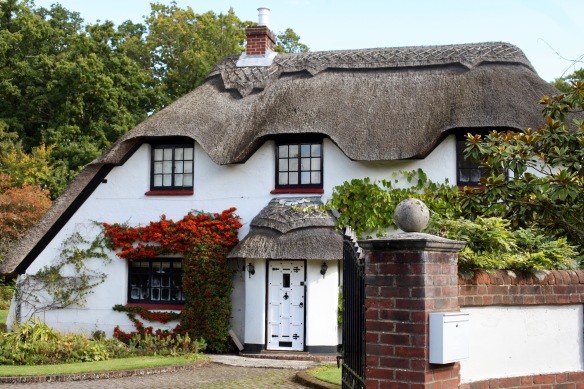


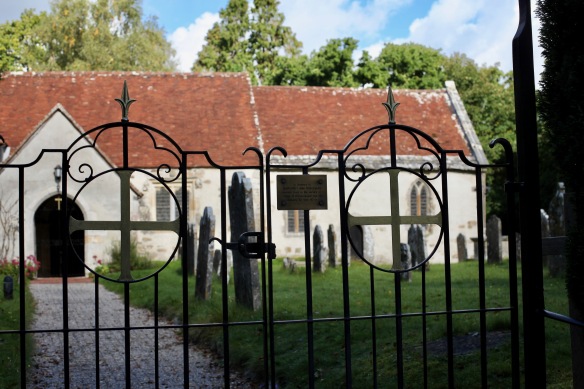
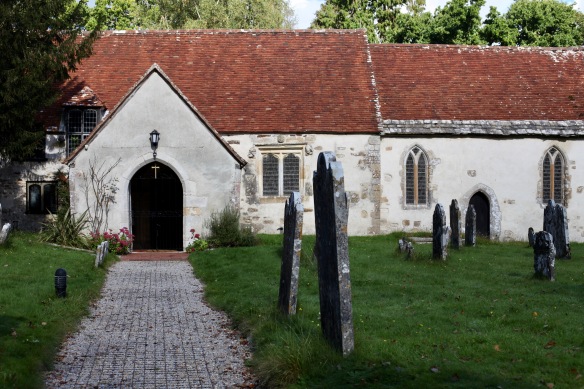


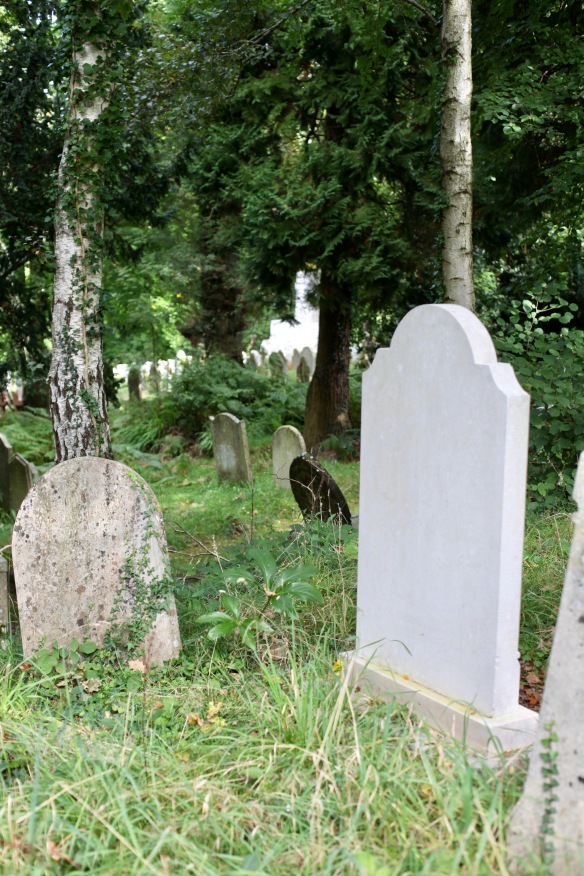
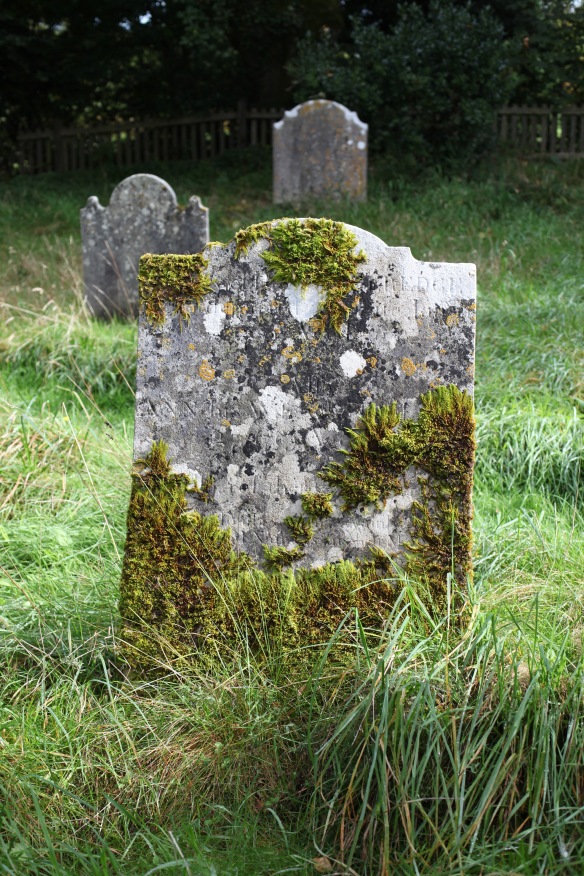

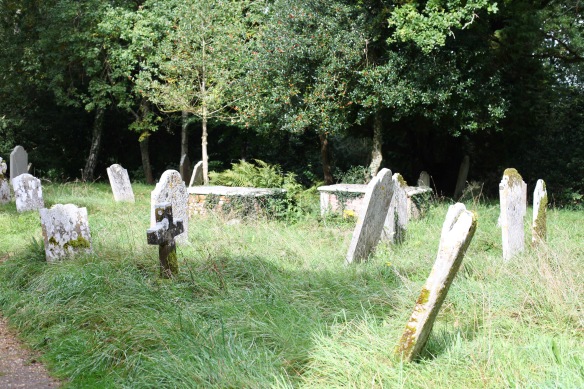
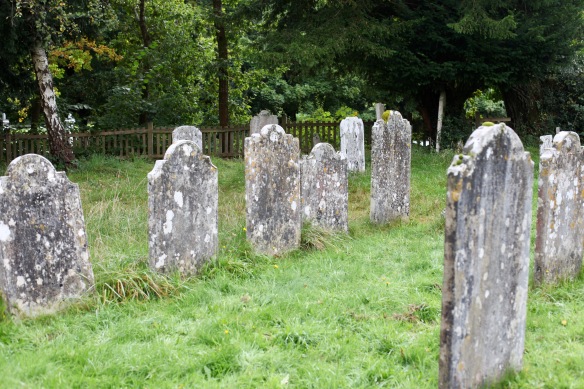

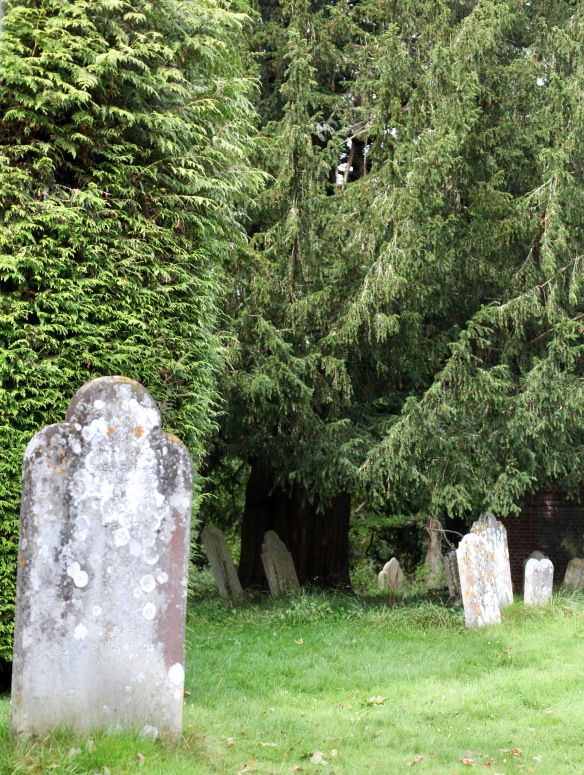
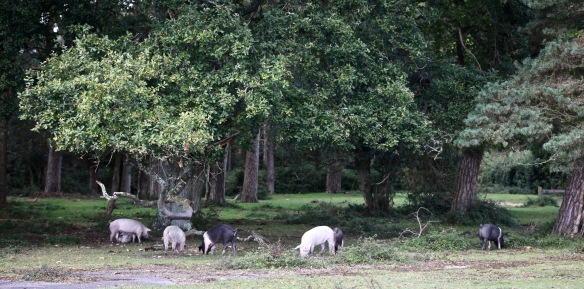


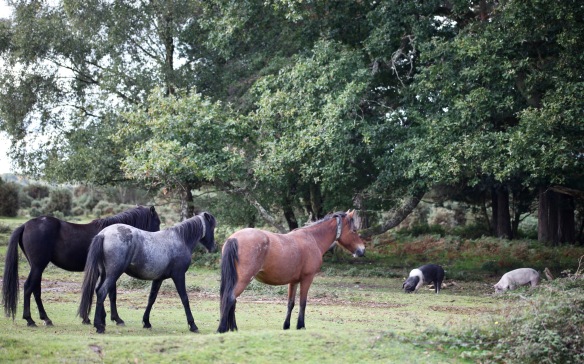
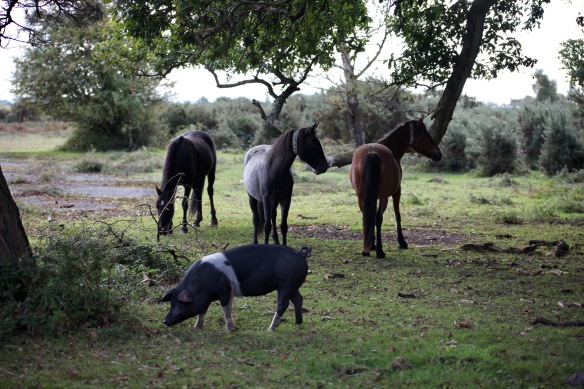
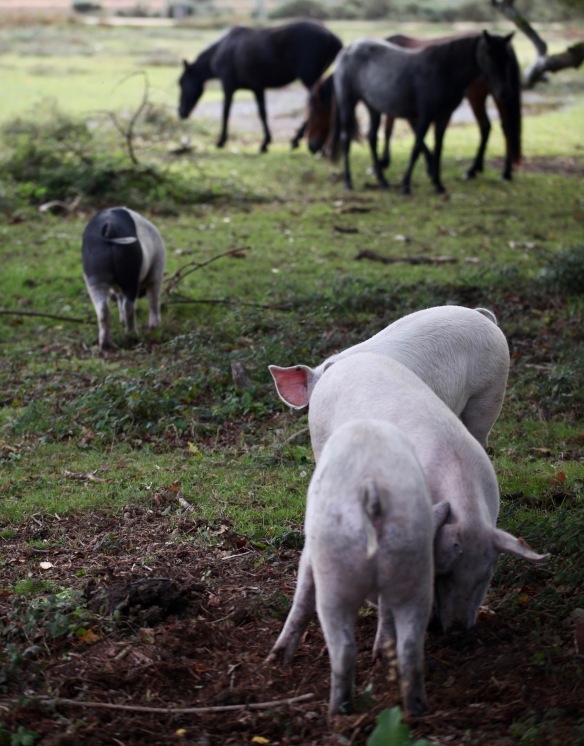


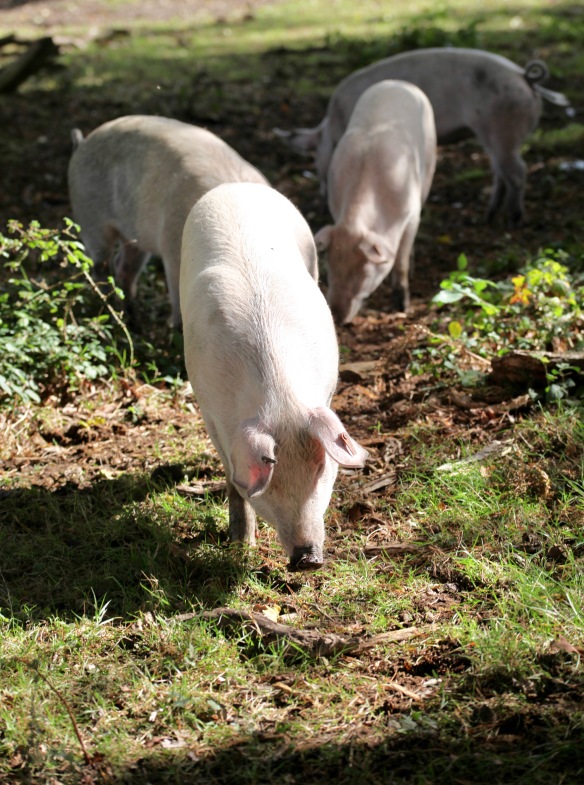
Another lovely outing with you Derrick! I’m fascianted with the horses-pig encounter and the White Cottage looks stunning. 🙂 Enjoy your party!
Many thanks, Dina
ponies and piggies and old graveyards, oh my <3 <3 you've such good things to photograph over there in your land <3
Many thanks, Kim. I consider myself very fortunate
A beautiful place to visit on the first day of autumn.
Certainly. Many thanks, Oglach
Your outings are always wonderful! I love the picture of the cottage and the church and gate! Wow pigs and horses?
Many thanks, Lynn. And donkeys and cattle and alpacas and sheep and hens and ducks…….
Yes you have them all!
Your part of the world is so lovely. I so enjoy your travels.
Many thanks, Pamela. We are so lucky to have the time to enjoy it
That was a most enjoyable little history lesson – and such a wonderful old tree! I quite like the pigs – they are intriguing animals!
Many thanks, Pauline
The pig looks so cute with her nose dirty.
Lovely comment. Thank you, Susan
On enlarging the photo of the house there did seem to be much that looked very recent to me. The thatch certainly looks to be in pristine condition.
Yep – thanks for the confirmation, Paol
You always pack so much into one day. Very interesting history on the church. I don’t suppose the gravestones were transcribed before they weathered so much. Pity to lose the details. Love the horse and pig photos.
Many thanks, Gwen.
The white cottage is very attractive. John Wise’s comments about the church additions was harsh. But then, people always have their opinions about changes to a beloved building. Your photos of the “stand-off” are great, especially that first one.
Very many thanks, Nicki
What a beautiful cottage. I love the red flowers over the window. Great photos, Derrick!
Many thanks Jill. It was those flowers that caught my eye as we were driving past
The post begins serenly with the sparkling, thatched cottage and leads quietly towards the old church and its older companions towering over humans in their eternal sleep. Your description never misses a beat, the extract from Doomsday Book etc. sustain the mood. The grave matter is lightened by the sparring between pigs and horses. Thanks for the trip down the bucolic path to the church!
Very many thanks, Uma for your careful and eloquent comment
I love the look and feel of this earthy post.
Many thanks, JoAnna for the reading and the perceptive comment
My pleasure!
The white cottage is so beautiful. The owner must be a lucky one. The gallery is awesome.
Many thanks, Rupali
Loved this one. Great post, as usual.
Thanks very much, Flower
Siempre paso por tu blog para leer y mirar las fotos. Tienes talento para mostrar lo cotidiano de modo interesante.
Thanks very much Walter
The cottage, even if new, is lovely. And the standoff reminded me my new daughter-in-law wants a pig. Her daughter wants a pony. I wonder if this post would satisfy them.
🙂 Try them, Elizabeth. Many thanks
Such a lovely area, Derrick. The gravestones amidst the trees and the old church are beautiful.
Yesterday, we walked around what passes for an old church and graveyard here–eighteenth-century. No pigs and horses though–at least not now.
I love the photos of the horse and pig standoff. I also love knowing the names of groups of animals. I didn’t remember a sounder of swine. Thank you for that! 🙂
Thanks a lot Merril, I once set a cryptic crossword based on collective nouns. Somme of them have stuck 🙂
Oh, I bet my husband would have had fun with that. He loves doing the NY Times crosswords.
I liked the ancient church and the green mossy gravestones, Derrick. It all appeals to me, as well as honeysuckle vines. Sounds and looks like time well spent.
The horses look healthy, coats have a nice sheen on them. Those pigs don’t look like they have wallowed much in mud lately. I like when animals get along.
Many thanks, Robin. It has been a good year for the animals
Beautiful writing by John Wise, and I loved reading about the 1000 year old yew!
Pigs can get quite territorial. My cousins down south had a couple of pigs, Charlotte and Wilbur. Wilbur left Charlotte behind with a litter of piglets and took off for parts unknown. He was later discovered nesting in a big hay mound in a neighboring farmer’s field. A cow had accidentally discovered Wilbur’s hideout while attempting to feed from the mound. Wilbur bit the cow on the nose. He took off once more, never to be seen again.
What a story, Lavinia. Thanks very much
Love that thatched roof cottage and the photographs of the horses. Nice to go out on a trip virtually through your lense
Thanks very much, Geetha
Welcome Derrick 🙂